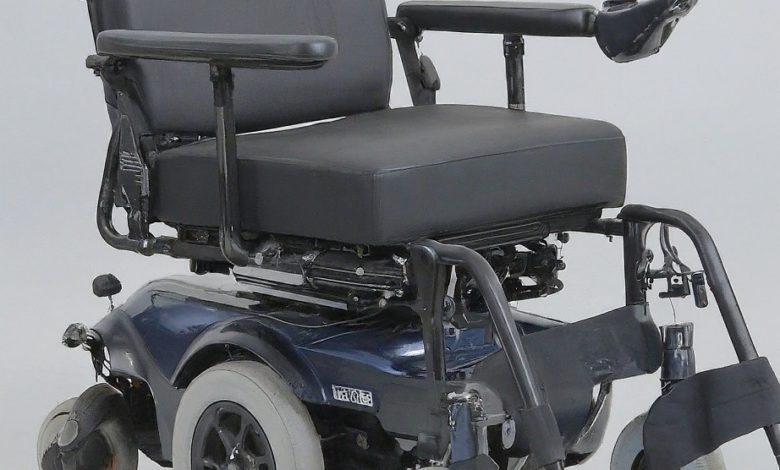Finding Your Perfect Ride: Types of Electric Wheelchairs
Discover the life-changing benefits of electric wheelchairs

Table of Contents
Finding Your Perfect Ride: Types of Electric Wheelchairs
Discover the life-changing benefits of electric wheelchairs
Imagine cruising down the sidewalk, feeling the wind in your hair, and exploring the world with newfound independence. That’s the magic of electric wheelchairs! Whether you’re looking for increased mobility, reduced fatigue, or simply a new way to get around, an electric wheelchair can be a game-changer.
This guide explores the world of electric wheelchairs, their advantages and potential drawbacks, and everything you need to know to find the perfect fit.
Electric Wheelchairs: A World of Benefits
Electric wheelchairs offer a multitude of advantages, empowering users to navigate their surroundings with ease. Here are some key benefits:
- Increased Mobility: Electric wheelchairs eliminate dependence on others for movement. You can go where you want, when you want, regaining control and independence.
- Reduced Fatigue: Forget tiring yourself out with manual wheelchairs. Electric wheelchairs take the effort out of getting around, allowing you to conserve energy for the activities you love.
- Improved Quality of Life: Electric wheelchairs open doors to a more fulfilling life. Enjoy social outings, explore new places, and participate in activities that may have been difficult before.
- Pain Management: Electric wheelchairs can significantly reduce strain and improve overall comfort for those experiencing pain or discomfort.
- Safety and Stability: Modern electric wheelchairs offer excellent stability and safety features, giving you peace of mind while navigating different terrains.
While electric wheelchairs provide a wealth of benefits, it’s essential to consider some factors to ensure you choose the right one:
- Power and Range: Electric wheelchairs come with varying battery capacities that dictate their range. Consider how far you typically travel and choose a wheelchair with a suitable battery life.
- Manoeuvrability: Depending on your environment, you might prioritize a highly manoeuvrable chair for tight spaces or a more robust option for outdoor use.
- Seating Options: Comfort is key! Look for adjustable seating, headrests, and armrests that cater to your specific needs and provide proper support.
- Weight and Portability: If portability is necessary, consider a lightweight, foldable electric wheelchair for more accessible transportation and storage.
- Durability: Electric wheelchairs are an investment. Choose a well-built and durable model from a reputable manufacturer to ensure long-lasting performance.
Electric Wheelchairs: Pros and Cons
| Pros | Cons |
| Increased mobility and independence | Higher upfront cost compared to manual wheelchairs |
| Reduced fatigue and strain | Requires regular battery charging |
| Improved quality of life and social interaction | May require practice for safe and efficient operation |
| Pain management and improved comfort | Some models may not be suitable for all terrains |
| Safety and stability features | Maintenance needs may vary depending on the model |
Electric Wheelchairs: A World of Options
Electric wheelchairs come in a variety of styles, each suited to specific needs and preferences. Here’s a closer look at some common types:
- Standard Electric Wheelchairs: These are the most common type, offering a good balance of manoeuvrability, comfort, and affordability.
- Mid-Wheel Drive Electric Wheelchairs: These chairs position the drive wheels in the middle of the base, providing excellent manoeuvrability in tight spaces and a more stable turning radius.
- Rear-Wheel Drive Electric Wheelchairs: These chairs offer a more comprehensive range of motion and better performance on outdoor terrains due to the rear-wheel placement. However, they may require more practice for smooth manoeuvring in tight spaces.
- Stand-Up Electric Wheelchairs: These innovative wheelchairs allow users to transition to a standing position, promoting improved circulation, social interaction, and daily living activities.
Revving Up for Freedom: A Guide to Electric Wheelchairs
Electric wheelchairs are like trusty steeds, empowering individuals to navigate their world with independence and confidence. But with so many varieties available, choosing the right one can feel overwhelming. Fear not, fellow adventurer! This guide will unveil the different types of electric wheelchairs, their pros and cons, and how to pick the perfect match for your journey.
Built for Exploration: Full-Size Electric Wheelchairs
Full-size electric wheelchairs, the SUVs of the electric wheelchair world, offer superior comfort and stability. They boast larger seats, armrests, and footrests, ensuring a pleasant ride for extended excursions. Additionally, their powerful batteries provide a more comprehensive travel range, making them ideal for exploring vast outdoor spaces or conquering long commutes.
Pros:
- Comfort: Spacious seating and adjustable features for a personalized fit.
- Stability: Wider wheelbase for a smooth and secure ride.
- Range: Powerful batteries allow for extended travel distances.
Cons:
- Manoeuvrability: Larger size might make tight spaces tricky to navigate.
- Portability: Not easily disassembled for transport.
Compact Companions: Travel Power Wheelchairs
Travel power wheelchairs are the champions of portability. These nifty companions fold or disassemble conveniently, fitting into car trunks or aeroplane cargo holds. Their lightweight design makes them perfect for navigating tight spaces or bustling cityscapes.
Pros:
- Portability: Folds or disassembles for easy transport.
- Maneuverability: Compact size allows for navigating tight spaces.
Cons:
- Comfort: Smaller seats and limited adjustability compared to full-size models.
- Range: Smaller batteries may limit travel distance.
Built for Power: Heavy-Duty Electric Wheelchairs
Heavy-duty electric wheelchairs are the workhorses of the bunch. Designed for users who require a higher weight capacity, these chairs boast robust frames and powerful motors. They can handle uneven terrain and provide excellent stability for a safe and secure ride.
Pros:
- Weight Capacity: Accommodates users who require a higher weight capacity.
- Durability: Reinforced frame built for strength and stability.
Cons:
- Manoeuvrability: Larger sizes might make tight spaces tricky to navigate.
- Cost: Typically more expensive than standard electric wheelchairs.
Steering Your Course: Drive Systems in Electric Wheelchairs
Now that you’ve explored the different types of electric wheelchairs let’s delve into the world of drive systems – the brains behind the movement. The three central drive systems are:
- Rear-Wheel Drive: These chairs offer excellent outdoor performance and a tight turning radius. However, they may require more upper body strength to manoeuvre.
- FFront-wheel drive is perfect for navigating tight spaces and overcoming obstacles. TIt provides good stability but might feel less manoeuvrable in open areas.
- Mid-Wheel Drive: These versatile chairs offer a balance between manoeuvrability and stability, making them a popular choice for everyday use.
Choosing the Right Drive System: When selecting a drive system, consider your environment, needs, and comfort level.
Beyond the Basics: Features to Consider
Electric wheelchairs come with a variety of features that can personalize your ride. Here are a few to consider:
- Seating: Adjustable seating options ensure optimal comfort and support.
- Footrests: Elevating or swinging footrests enhance comfort and posture.
- Headrests: Provide additional support and prevent neck strain.
- Lighting: Improve visibility during nighttime adventures.
- Oxygen Tank Holders: For individuals who require supplemental oxygen.
Test Drive Your Options!
The best way to find your perfect electric wheelchair is to try it out! Reputable mobility stores offer test drives so you can experience the chair’s functionality and comfort firsthand.
FAQs for Finding Your Perfect Ride: Types of Electric Wheelchairs
General
- What are the benefits of electric wheelchairs?
- Increased mobility and independence
- Reduced fatigue
- Improved quality of life
- Pain management
- Safety and stability
- What factors should I consider when choosing an electric wheelchair?
- Power and range
- Maneuverability
- Seating options
- Weight and portability
- Durability
- What are the pros and cons of electric wheelchairs?
Pros * Increased mobility and independence * Reduced fatigue and strain * Improved quality of life and social interaction * Pain management and improved comfort * Safety and stability features
Cons * Higher upfront cost compared to manual wheelchairs * Requires regular battery charging * May require practice for safe and efficient operation * Some models may not be suitable for all terrains * Maintenance needs may vary depending on the model.
Types of Electric Wheelchairs
- What are the different types of electric wheelchairs?
- Standard electric wheelchairs
- Mid-wheel drive electric wheelchairs.
- Rear-wheel drive electric wheelchairs
- Stand-up electric wheelchairs
- Full-size electric wheelchairs
- Travel power wheelchairs
- Heavy-duty electric wheelchairs
- What is the best type of electric wheelchair for me? The best type of electric wheelchair depends on your individual needs and preferences. Consider your environment, how you will be using the wheelchair, and your comfort level.
Features
- What are some features to consider when choosing an electric wheelchair?
- Seating options
- Footrests
- Headrests
- Lighting
- Oxygen tank holders
- How can I find the perfect electric wheelchair? The best way to find the ideal electric wheelchair is to try it out! Reputable mobility stores offer test drives so you can experience the chair’s functionality and comfort firsthand.



